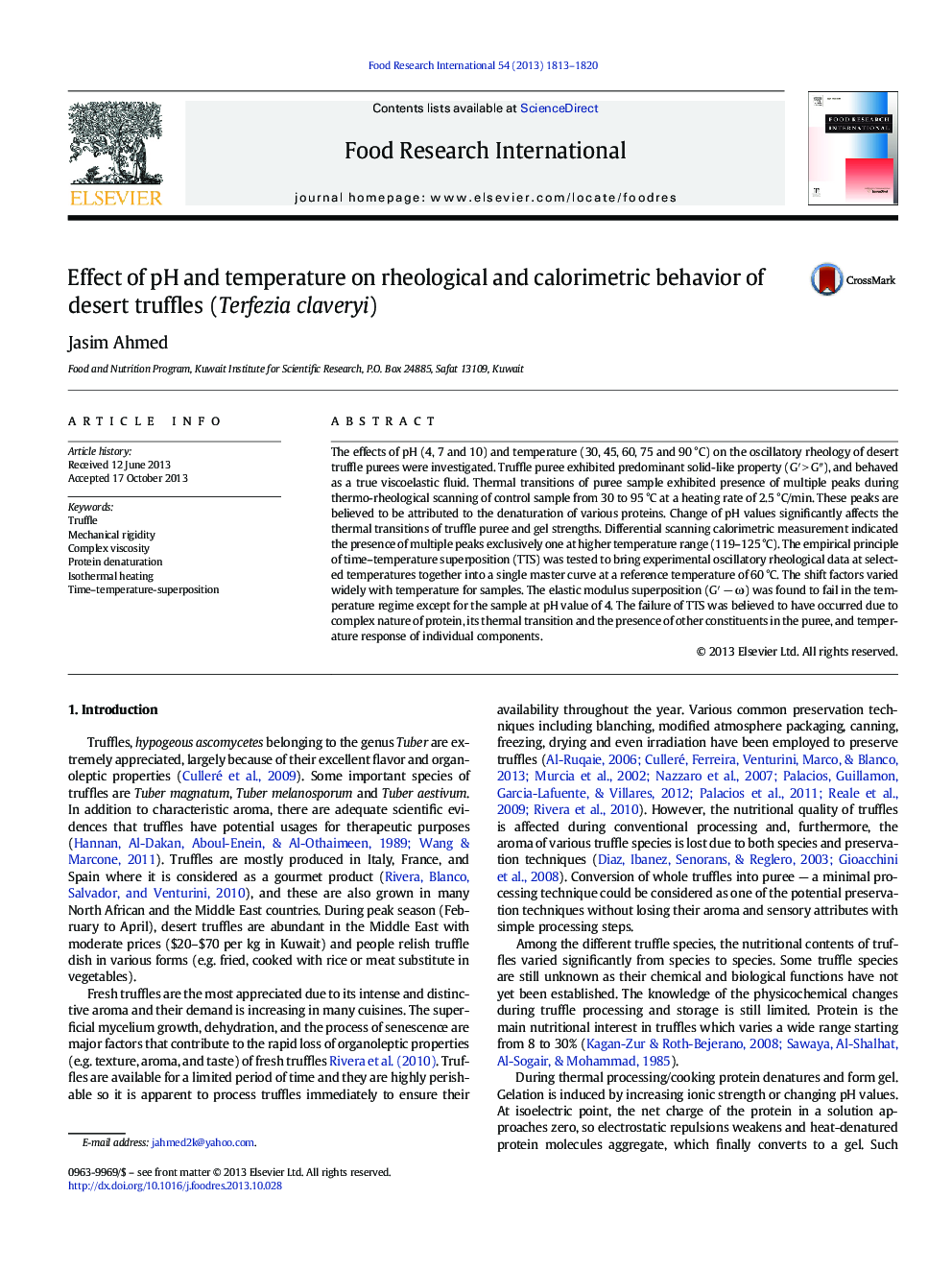| Article ID | Journal | Published Year | Pages | File Type |
|---|---|---|---|---|
| 6397445 | Food Research International | 2013 | 8 Pages |
â¢Rheological measurement is employed to detect truffle protein denaturation.â¢pH significantly affected truffle puree rheology.â¢Truffle particles are irregular in shape.â¢Time-temperature-superposition failed to describe elastic modulus-frequency data.
The effects of pH (4, 7 and 10) and temperature (30, 45, 60, 75 and 90 °C) on the oscillatory rheology of desert truffle purees were investigated. Truffle puree exhibited predominant solid-like property (Gâ²Â > Gâ³), and behaved as a true viscoelastic fluid. Thermal transitions of puree sample exhibited presence of multiple peaks during thermo-rheological scanning of control sample from 30 to 95 °C at a heating rate of 2.5 °C/min. These peaks are believed to be attributed to the denaturation of various proteins. Change of pH values significantly affects the thermal transitions of truffle puree and gel strengths. Differential scanning calorimetric measurement indicated the presence of multiple peaks exclusively one at higher temperature range (119-125 °C). The empirical principle of time-temperature superposition (TTS) was tested to bring experimental oscillatory rheological data at selected temperatures together into a single master curve at a reference temperature of 60 °C. The shift factors varied widely with temperature for samples. The elastic modulus superposition (Gâ²Â â Ï) was found to fail in the temperature regime except for the sample at pH value of 4. The failure of TTS was believed to have occurred due to complex nature of protein, its thermal transition and the presence of other constituents in the puree, and temperature response of individual components.
